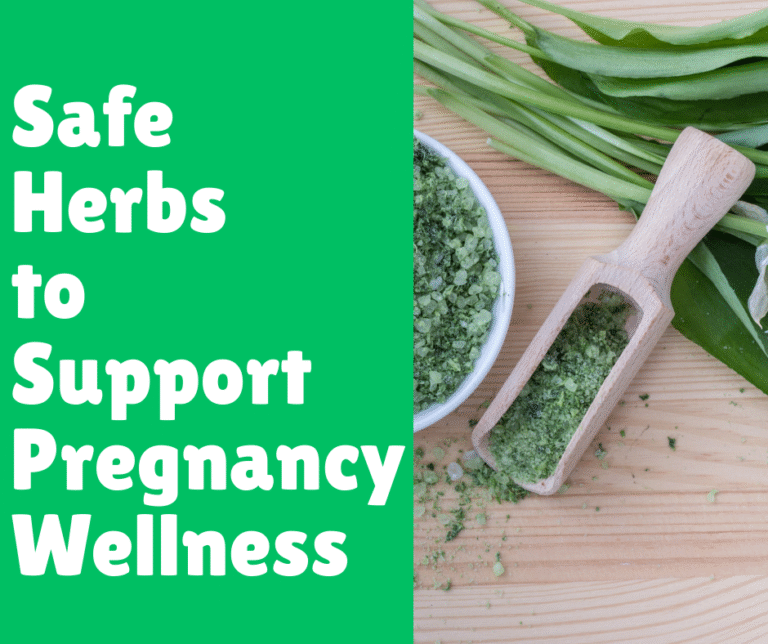Top Herbs for Managing High Blood Pressure
Post Disclaimer
Content on this site is for educational use only and not a substitute for medical advice. Herbal remedies are based on traditional knowledge and not medical recommendations. Please consult a healthcare professional before trying any herb. We do not assume responsibility for any outcomes or adverse effects resulting from the use of information provided here.
High blood pressure, also known as hypertension, is often referred to as the “silent killer.” It can creep up without symptoms and cause serious health complications like heart disease, stroke, and kidney failure.
Despite the rise in cases, many people are turning to natural remedies, such as herbs, to help manage their condition.
You may be wondering: Can herbs really help lower blood pressure, or is it just another health trend? The truth is, certain herbs have been used for centuries to improve heart health and regulate blood pressure.
They can serve as a complementary approach to traditional medication, supporting overall cardiovascular health.
In this post, we’ll explore the best herbs for high blood pressure, how they work, and practical ways to incorporate them into your daily routine.
Could Herbal Remedies Help You Tackle High Blood Pressure?
Imagine feeling like you’re doing everything right to maintain a healthy lifestyle eating well, exercising, and managing stress but your blood pressure still remains high. You’re not alone.
It’s a common struggle for many people, especially as stress, poor diet, and sedentary habits have become part of modern life.
But what if there was an age-old solution sitting on your kitchen shelf or growing in your backyard that could offer relief?
What if herbs, the same plants our ancestors relied on for healing, could play a role in lowering blood pressure naturally? It may sound too good to be true, but the evidence is mounting in favor of natural remedies.
Let’s dive deeper into the herbs that can make a real difference for your blood pressure and overall health.
The Relationship Between Herbs and High Blood Pressure
Herbs have been used for centuries in traditional medicine to treat various ailments, including high blood pressure.
They are often rich in bioactive compounds that can help relax blood vessels, reduce inflammation, and improve overall circulation.
In fact, many modern medications for high blood pressure are derived from plant-based compounds.
For example, the drug captopril, used to treat high blood pressure, comes from a plant known as Capiscumannuum (bell pepper).
While herbal remedies might not offer a quick fix, they can be a natural way to complement your lifestyle changes and medication plan.
The Top Herbs for High Blood Pressure
- Garlic (Allium sativum)
Garlic has long been praised for its numerous health benefits, especially in promoting cardiovascular health. Studies have shown that garlic may help lower blood pressure by acting as a natural vasodilator—meaning it helps widen blood vessels and improve blood flow. One study found that a daily dose of garlic was as effective as some blood pressure medications for lowering systolic blood pressure.
How to Use:
- Fresh garlic: Crush or chop a clove and let it sit for a few minutes to activate its compounds. You can add it to soups, salads, or smoothies.
- Garlic supplements: If you’re not a fan of the taste, garlic supplements are widely available in pill or capsule form.
- Hibiscus (Hibiscus sabdariffa)
Hibiscus tea is a favorite among those looking to naturally lower their blood pressure. The anthocyanins in hibiscus flowers are thought to help relax blood vessels, reduce inflammation, and improve circulation. Studies have shown that drinking hibiscus tea regularly can result in a noticeable reduction in blood pressure.
How to Use:
- Make hibiscus tea by steeping dried hibiscus flowers in hot water for 5-10 minutes. Drink 2-3 cups daily for optimal effects.
- You can also find hibiscus supplements in capsule form.
- Hawthorn (Crataegusmonogyna)
Hawthorn is another herb that has been used for centuries to treat heart and circulation issues. This herb contains antioxidants, flavonoids, and other compounds that support heart health and help lower blood pressure by dilating blood vessels and improving blood flow. Hawthorn is commonly used to treat heart failure, but it also has blood pressure-lowering effects.
How to Use:
- Hawthorn berries can be found in teas, extracts, or supplements. The recommended dosage varies, so it’s best to follow the label instructions or consult with a healthcare provider.
- Olive Leaf (Oleaeuropaea)
Olive leaf extract contains oleuropein, a compound known for its ability to lower blood pressure by dilating blood vessels. Studies show that olive leaf extract can help lower both systolic and diastolic blood pressure in individuals with hypertension. It also has anti-inflammatory and antioxidant properties, making it a great all-around herb for cardiovascular health.
How to Use:
- You can drink olive leaf tea or take olive leaf extract capsules. Be sure to follow the dosage instructions provided by the manufacturer.
- Basil (Ocimumbasilicum)
Basil is not only a popular culinary herb but also an excellent choice for managing high blood pressure. The eugenol compound in basil helps relax blood vessels and improve circulation. Basil also contains antioxidants that reduce inflammation, making it beneficial for heart health.
How to Use:
- Add fresh basil leaves to your meals, salads, or smoothies.
- Basil tea can also be made by steeping fresh or dried basil leaves in hot water.
Table: Comparison of Herbs for High Blood Pressure
| Herb | Active Compounds | Primary Action |
| Garlic | Allicin | Promotes vasodilation, provides antioxidant support |
| Hibiscus | Anthocyanins | Relaxes blood vessels, supports healthy circulation |
| Hawthorn | Flavonoids, Antioxidants | Improves blood flow, dilates vessels |
| Olive Leaf | Oleuropein | Encourages vasodilation, offers antioxidant effects |
| Basil | Eugenol | Relaxes blood vessels, acts as an antioxidant |
Step-by-Step Instructions for Using Herbs
- Start Slowly: If you’re new to using herbs for high blood pressure, begin with one herb at a time. This allows you to monitor your body’s response. For example, start by incorporating garlic into your diet and see how it affects your blood pressure after a week.
- Consistency is Key: Herbs take time to show results. Incorporate them into your daily routine consistently for at least 2-3 weeks. Track your blood pressure readings to monitor any improvements.
- Combine Herbs for Best Results: You don’t have to stick to just one herb. You can combine several herbs like garlic and hibiscus tea, but be mindful of the recommended dosages.
- Consult with Your Doctor: Before starting any herbal regimen, it’s crucial to talk to your doctor, especially if you’re already on blood pressure medication. Some herbs may interact with prescription medications, so always get professional guidance.
Common Mistakes to Avoid
- Overdoing It: Just because an herb is natural doesn’t mean more is better. Overconsumption of herbs can lead to side effects like stomach upset or interactions with medications. Stick to recommended dosages.
- Ignoring Diet and Exercise: Herbs are effective, but they work best when combined with a healthy lifestyle. Don’t rely solely on herbs—continue to eat a balanced diet, exercise regularly, and manage stress.
- Not Being Patient: Herbs are not quick fixes. It may take weeks for noticeable changes in blood pressure. Don’t get discouraged if you don’t see instant results.
- Skipping the Doctor’s Advice: Always consult your healthcare provider before starting any new herbal treatment, especially if you have existing health conditions or are taking medications. Some herbs can interact with other drugs.
Conclusion
Managing high blood pressure doesn’t have to be an uphill battle. Incorporating certain herbs into your lifestyle can provide you with a natural, holistic way to support your heart health. Whether it’s adding garlic to your meals, sipping hibiscus tea, or trying olive leaf extract, these herbs offer promising benefits for lowering blood pressure and improving cardiovascular health.
As with any treatment, consistency, patience, and a healthy lifestyle are key. Always consult with your doctor before starting any new herbal regimen to ensure it’s safe and effective for you.
FAQs
Q1: Can I rely solely on herbs for treating high blood pressure?
While herbs can support blood pressure management, they should be used in conjunction with a healthy diet, exercise, and medical treatments prescribed by your doctor. Always consult your healthcare provider.
Q2: Are there any side effects to using these herbs?
Most herbs are safe when used as directed, but overuse or improper combinations with medications can cause side effects. Always follow recommended dosages and consult with your healthcare provider.
Q3: How long does it take to see results from using these herbs?
Results can vary, but it may take 2-3 weeks of consistent use before noticing a reduction in blood pressure. Keep track of your readings and consult your doctor regularly.
Q4: Can I use these herbs alongside my prescribed blood pressure medication?
Some herbs may interact with blood pressure medications, so it’s important to talk to your doctor before starting any herbal treatments.
Q5: How can I make hibiscus tea at home?
Simply steep 1-2 teaspoons of dried hibiscus flowers in hot water for 5-10 minutes. Strain and enjoy! You can drink up to 3 cups daily.








